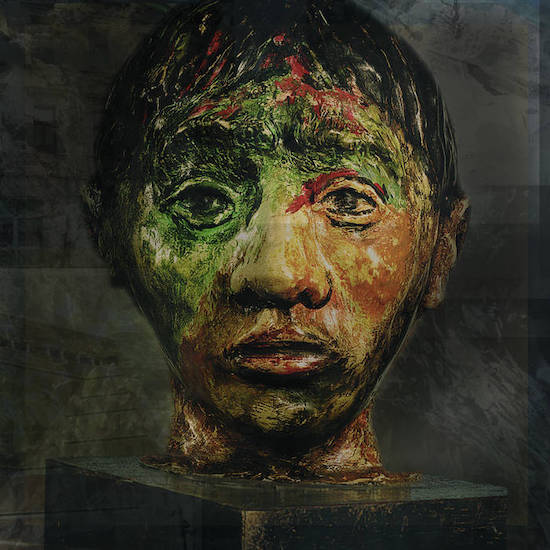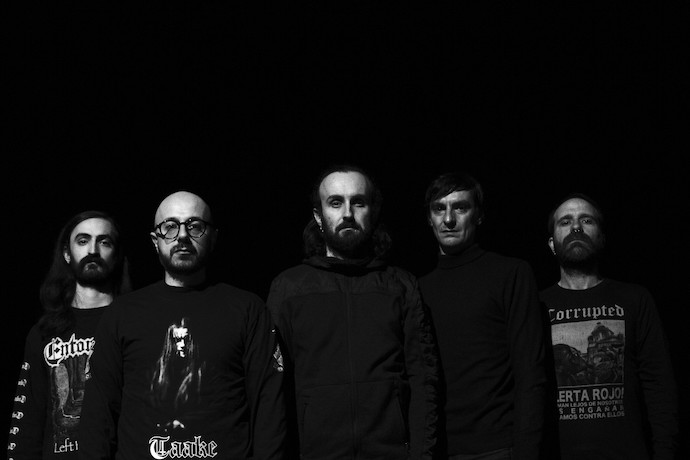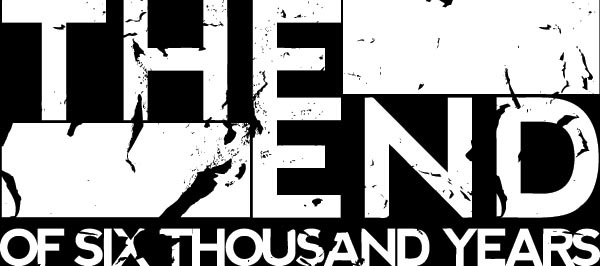
Today we have another tale of slumber and revival. In this case it’s the Italian band The End of Six Thousand Years. Their inception occurred nearly 20 years ago, and by 2012 they had released two albums, in addition to some shorter releases. But then a long silence befell them, interrupted only by a single (“Angelus Errare“) that emerged in 2020.
Well, they weren’t actually sleeping, more a case of “life getting in the way”. Yet the desire didn’t die, and although line-up changes have occurred, the band is now returning with a new EP that will be released by Hypershape Records on May 18th. As a sign of the rebirth, and it’s fair to say a reinvention, the new EP is self-titled. It includes four tracks, concluding with a cover of “The Man Who Loves to Hurt Himself” by Today Is The Day, and we’ve got all four of them for your listening pleasure today.

In the band’s current lineup, founding members Nicola Donà (Vocals), Matteo Borzini (Drums), and Luca Dalù (Bass) are joined by guitarists Michele Basso (Viscera///, Formalist, Hypershape Records) and Gianmaria Mustillo (Hierophant, Carnero, Abaton). We have this statement from them to share about the new EP before we get to the music:
“It’s hard to put into words how good it feels to release music again after an almost 10 years long hiatus.
“This EP is a reflection of our urge to be a band again: we wanted it to feel as raw and honest as we could. Since the band started in 2004 we tried to stray from the simpler solution of sticking to one genre, trying to mix up all our influences in a meaningful and fulfilling way of expressing ourselves. These 3 new songs are no different. The stakes were high for a revamped line-up, considering how rarely we met up in person during the writing and recording process.
“It all turned out to be just as we imagined it: A dark, unfiltered statement about the band’s future”.
It will be obvious to you, based on the music, that The End of Six Thousand Years are inspired by a variety of influences. How those influences surface, and how well the band have integrated all of them, are among the reasons why the new EP produces such a captivating experience.
A hasty summing-up would make reference to elements of “black-death metal, post rock, dark punk and more, shrouded under a veil of bleakness”, which is what the PR materials preview, but of course we have some more detailed impressions to offer about how the band bring these ingredients together and the impact they have on a listener’s moods, minds, and heart rates.

The opening track “Collider“ is well-named, in part because it is a collision of different genre ingredients, including post-metal, prog, death metal, punk, and black metal. But to quickly emphasize, it’s not the kind of collision that leaves the parts mangled and randomly scattered about the pavement, but instead leaves the vehicles still moving, now blended into an intriguing new shape advancing in a different direction.
The performers are obviously talented, and the song is mixed in a way that allows inspection of all their contributions as they move between the channels, including the riotously screamed vocals. They create an amalgam of dissonant and disorienting (but chime-like) guitars, bowel-loosening bass maneuvers, rapidly changing drum patterns, and a general atmosphere of dread and derangement.
Disharmony and intricacy brand the layered guitars as they screech and swirl, jitter and jolt, but together with the superb drumming, the prominent bass, and those larynx-shredding vocals, they do kick the adrenaline levels way up, even as the song as a whole proves to be disorienting and distressing.
What comes next is “Endbearer“, and it’s as much of a musical kaleidoscope as “Collider”, with a multitude of moving parts changing, falling into place, and shifting again. But immediately it’s faster and more crazed. The drums blast away like munitions; the guitars sear and writhe; the screamed vocals seem to rip apart in their extremity. But the band’s propensity for constant change reveals itself as they bring in bracing gallops, brazen chords, darting arpeggios, hard-slugging grooves, and threads of often-dissonant melody that channel confusion and angst, fury and fear.
The third song, “Voidwalker“, is as eye-popping as the first two, but as the name suggests, it’s more sinister and eerie, though no less elaborate and intricate. It too is a blend of dazzling, deranged, and disorienting sensations, but more hallucinatory, frightening, and bleak. There’s an off-world ring in the guitars’ tones, which send chills down the spine, but in addition to the music’s emotional turmoil and turbulence you’ll be equally thrilled by the lights-out drumming, the bone-bruising bass, and the asylum-quality vocal excesses.
And finally we come to that Today Is the Day cover, “The Man Who Loves to Hurt Himself“. If you’re not familiar with the original, you can check out a live performance of the song here. It’s both bleak and bruising, and feverish and frenzied. It gets its hooks in the head too.
The End of Six Thousand Years do the song justice, from the boiling violence of the doubled vocals to the eye-popping drumwork, from the pile-driving grooves to the needles-under-the-fingernails guitar mania. And these Italians succeed in adding their own musical mutations to the experience, making it even more viscerally “muscular” and head-twisting.
And with that we’ll leave you to this electrifying whirligig of an EP.
The band deserve a big round of applause. The people who worked on the production deserve a lot of credit too: The drums were recorded by Francesco Tosi and Andrea Collaro at Hangar 121. The guitars and bass were recorded by Alexander Lizzori at Elfo studio. The vocals were recorded by Alex Bounty. The EP was mixed by Gabriele Gramaglia, and mastered by Simon Da Silva and Fernando Lopez at Empty Hall Studio.
The EP is available for pre-order now (see the links below), in limited cassette-tape and digital formats.
https://hypershaperecords.bandcamp.com/album/ep-2023
http://theendofsixthousandyears.bandcamp.com/
https://www.facebook.com/theendofsixthousandyears
